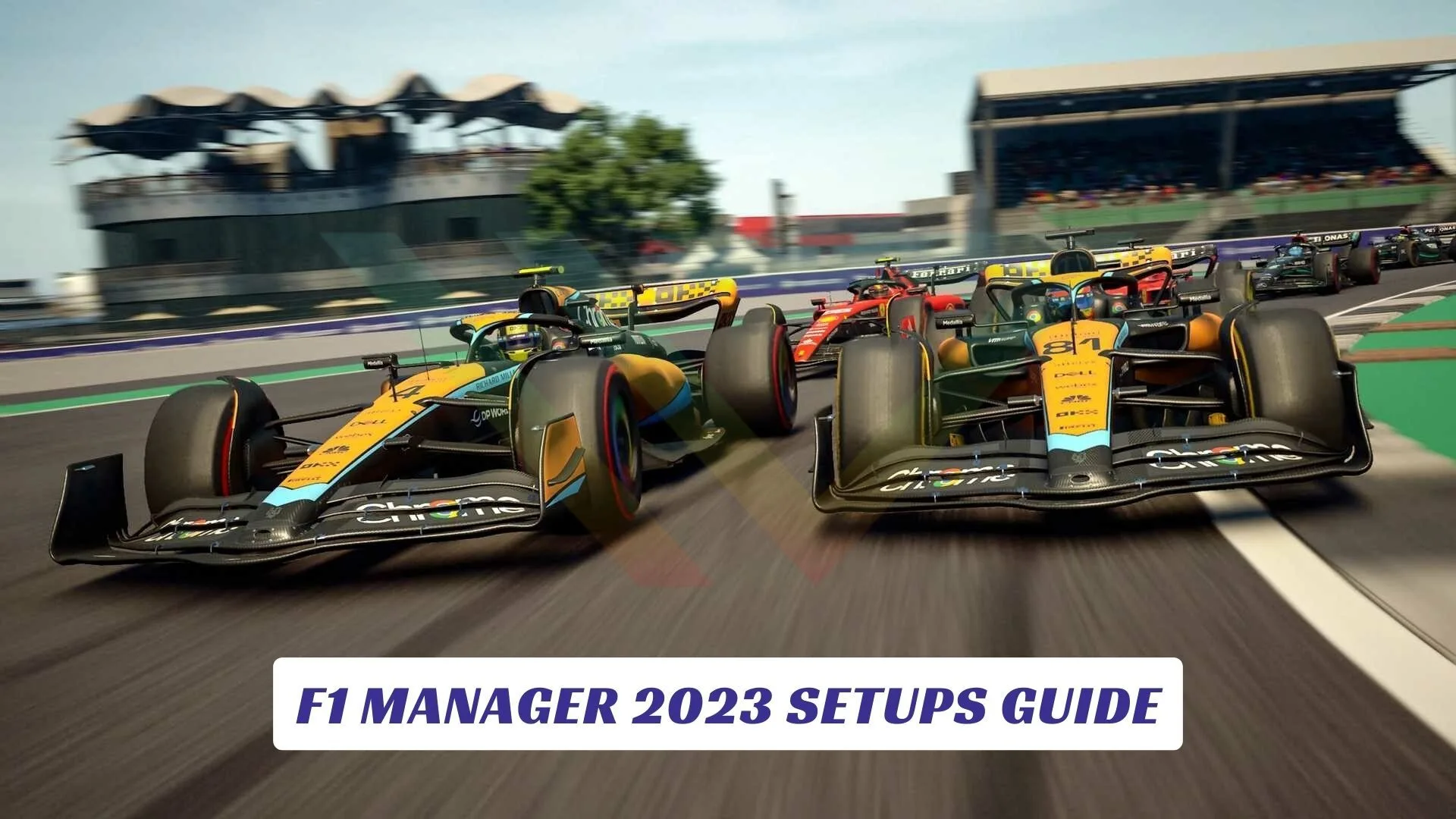Contents
F1 Manager 2023 builds on a promising start and offers a fresh experience to fans of the series. Frontier Developments has leaned into smaller experiences and tactical streamlining in this year’s entry, but it still retains the depth of its predecessor.
In F1 Manager 2023, each track, like in F1 23, requires its own customized configuration. However, you are only able to refine your car setup during practice sessions. You now have to worry about two cars instead of just one.
As previously stated, you have a limited number of practice sessions per race weekend to perfect your setups. That’s three practice sessions for a typical race weekend. However, because F1 sprint races are new to the calendar this year, you only have one practice session to nail the configuration on sprint weekends.
F1 Manager 2023 Setup Basics You Need To Know
F1 Manager 2023 setups are divided into five categories:
- Oversteer,
- Braking stability,
- Cornering,
- Traction,
- Straights
A blue bar represents the ideal range for each category. These bars begin large but gradually narrow as your driver learns setup knowledge.
Oversteer
Oversteer occurs when your driver asks more from their car’s grip than it can handle, typically resulting in the rear of the vehicle slipping and sliding sideways.
Braking Stability
Braking stability, or ESC as it’s often called, is an important factor in the car’s performance. The system of your car is constantly monitoring your intended direction of travel using data pulled from the yaw, steering wheel angle, and wheel speed sensors. If it detects that the car is turning into a tighter corner, for example, it will apply brake pressure to an inner wheel or reduce engine power to help you stay on track.
Cornering
F1 drivers approach corners in four stages: positioning, braking, turning in, and exiting. They approach corners at high speeds and apply the brakes as quickly as possible to optimize speed through the corner. Each F1 driver approaches corners in their own distinct manner, depending on their driving style.
That’s why you need to setup your car according to your drivers’ feedback. This will improve your drivers’ cornering abilities, and they will be able to gain in corners compared to their rivals.
Traction
ABS (Anti-lock Braking System) and traction control are not available on F1 cars. ABS and traction control were outlawed in F1 racing in 1993, and all Formula 1 cars must follow the rules that prevent their use in the competition.
However, there are some parts in an F1 car that improve the car’s traction, like front and rear wing angle, anti-roll distribution, and tyre camber. Below you can find which parts of an F1 car affect what setup basics we mentioned:
| Setup Parts | Affects |
|---|---|
| Front Wing Angle | Oversteer, Braking Stability, Cornering, Traction, Straights |
| Rear Wing Angle | Oversteer, Braking Stability, Cornering, Traction, Straights |
| Anti-Roll Distribution | Oversteer, Braking Stability, Cornering, Traction |
| Tyre Camber | Oversteer, Braking Stability, Cornering, Traction |
| Toe-Out | Braking Stability, Cornering |
Practice Sessions Are Important To Find The Best F1 Manager 2023 Setup
F1 Manager 2023 borrows ’22’s simple setup minigame wholesale, with sliders for Front Wing Angle, Rear Wing Angle, Anti-Roll Distribution, Tyre Camber, and Toe-Out, all affecting five areas of driver feedback. Adjusting one area of the setup without altering another is possible but can be tricky to nail down; for example, reducing oversteer by tweaking the anti-roll distribution may require minor front-wing adjustments to maintain an optimal range.
The ideal goal is to reach a value of 75% or higher for each category, but achieving this can take some time and practice sessions. Running your drivers through all of FP1 and a handful of GPs will help get them closer to that target, increasing their confidence and giving them the best chance of winning races.
It’s also worth ensuring that you send your driver out for the longest stint possible during practice, particularly on a new circuit. This will maximize the chances of gaining valuable setup feedback from them. Ideally, this will be around 20 laps, as drivers will need to have enough experience of the track to be able to fully evaluate the car’s capabilities and limitations.
Ultimately, finding the perfect car setup in F1 Manager 2023 requires a mix of trial and error and an understanding of how each setting impacts your driver’s performance. A well-tuned setup boosts your driver’s confidence, giving them a competitive edge on the track.
